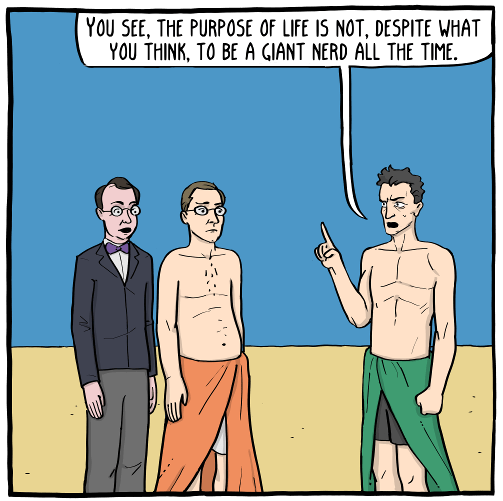Game Pile: Dixit
Been a while since I just straight-up gushed about a good game I liked, hasn’t it?
Dixit is a 2008 card game where players take turns trying to connect a chosen word by the active player (the storyteller) to one of a number of cards with dreamlike images on them. Complicating things is that the storyteller starts by picking their card in secret, then announces the word, then each player contributes a card of their own in secret. The cards are shuffled, then revealed, and the players have to choose which of these cards they think is the storyteller’s chosen card to represent the chosen word. If you’re the storyteller and everyone picks your card, they all get points and you don’t; if you’re the storyteller and some but not all the players pick your card, you get points and they do too.
May 2019 Wrapup!
- Blog posts
This month’s blog posts featured a few ideas I was glad for the practice to do; I took to my old D&D setting, Cobrin’Seil, and went over the names in that space and the way we talk about the characters and nations there (parts 1, 2, 3, 4). I also tried more rapid-fire Story Pile videos, which I liked a lot because there were plenty of things I’d watched that had maybe a bit of a point to them, but which definitely didn’t warrant a larger article (parts 1, 2, 3, and 4).
Independently of these sets, I also made this piece on the remoteness of a storyteller in a videogame, which evokes the same basic problem of the self-driving car. I also put together a thesis about normality, or normality in game, and how I want to work for it and work towards it. I also touched on a weird thing in Game Studies, where Wittgenstein comes up a lot.
The video this month hit our first irreperable problem! The original video is still going to happen, but since it failed, I instead put this together in a rush:
This month’s shirt is this absolute banger:

This month saw Comic-Gong happen, and with that came out two new games – Hook, Line & Sinker and Freight Expectations! These games will be going up on the invincible ink website soon, and there’s a print-and-play version of Hook, Line, & Sinker over on my patreon for you if you wanna check it out!
Another cool thing about the game work is… something… I can’t… talk about. But it’s cool! Trust me, it’ super cool! Here’s hoping it works out.
We had an election. It didn’t go well.
May Shirt: SPITE
This month, our shirt design is something I made as a single badge for an article, and thought was so neat, I decided to make it into a shirt.
Here’s the design:

And here the design is on our friendly gormless supposedly unisex Redbubble model:
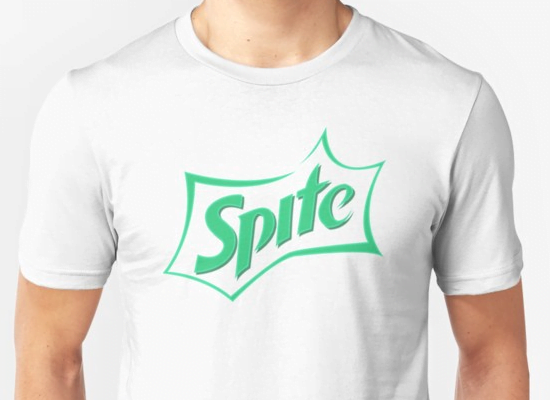
And here’s the design being modelled by the Teepublic ghost:

And here, amazingly, is this shirt being modelled in black by Sasha L H, who bought it because I told her not to, and vol took a picture of it and it’s really cool like holy heck.

This design is available on a host of shirts and styles. If you like the look, I can see about making the individual badges into stickers.
Rebuilding Cobrin’Seil Part 4: The Everywhere Else
Back in 3rd edition, I created my own D&D setting. It wasn’t very good, but I’m still very attached to it, and want to use it as an object lesson in improving. I also want to show people that everything comes from somewhere, and your old work can help become foundational to your new work.
Content Warning: Some of the old text is going to feature some unconscious cissexism and sexism, and I know there are a few unknowingly racist terms that I used.
Alright, so previous bandaids were about my decisions that were thoughtless and badly thought out, like ‘Kyngdom’ as a name, or barely scrubbing the name of Cimmura. The thing is, Dal Raeda, the Eresh Protectorate, and Amenti represent what are some of the best designed pieces of the setting, the places where I had good, fundamentally usable ideas.
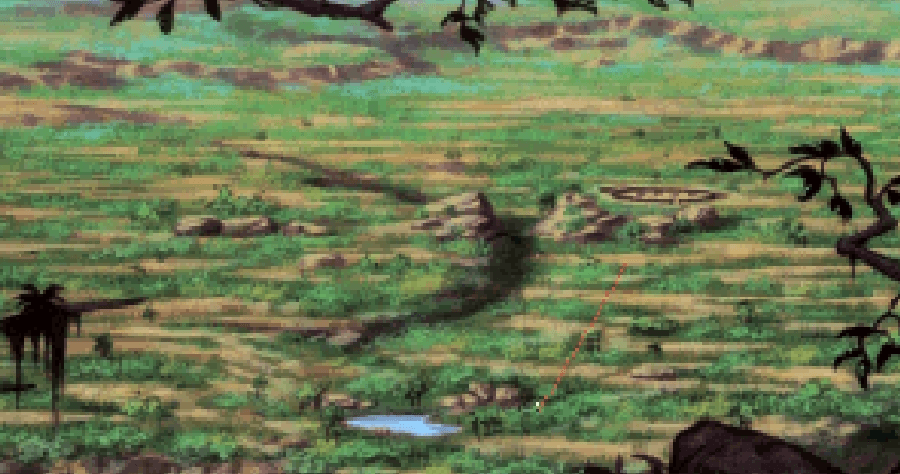
The rest of things is where it all gets a bit soft, and also where I did some things that are uncomfortable, and now with the benefit of experience, I realise are pretty damn racist.
You might have notice that I’ve avoided showing any maps of this world, because it’s all in flux now.
Continue Reading →Story Pile: The Videogame Tie In Pile
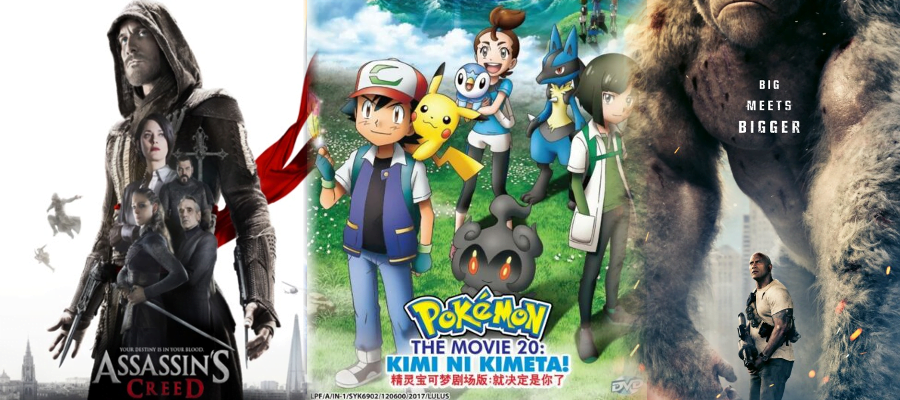
The Top 5 Reasons You Should Make A List Article
Hey, you notice how much of the internet is lists? Ever wonder why?
5. They’re Approachable
Lists are really easy to get into reading. People can tell – usually – that a list numbering system clearly indicates a form of escalation, it’ll always be easy to collect things with a common theme that causes people to wonder how you link things together, and it creates natural break points for readers to stop reading.
People intuitively seek sequences, and so if you present them with the knowledge they’re going to experience a sequence, they kind of mentally ‘sign on’ for it and they sort of get locked in to engaging with it. It’s a great way to connect an audience to your work.
B. No unilateral disarmament
As long as Buzzfeed and other major news sources are using this model to get people to pay attention to stuff, and operating with my idea that getting writing is important and it’s worth doing, the listicle is going to be here, and while there may be some case to be made about them simplifying media forms, I don’t see why people with barriers to creativity should be the ones told they need to give up on the most accessible and popular forms as if it’s somehow their job to drive the form of all online journalism forwards with the weight of their very souls.
3. The List Forms Its Own Context
When you make a list, everything in the list is in the list. This means the list forms its own context, and each thing in the list can inform everything else in the list. Which means that if you present five list items about (say), the best octopuses, you’re knowingly just comparing the octopuses in the list. That means it’s easier for you to organise your thoughts, and you can put the list objects in direct contention with one another.
II. You Can Couch the Bummer
Ordering a list is pretty arbitary. Sometimes you’ll track a number value, like ‘biggest failures’ or ‘largest sheep by volume’ and then you can just order the list by that, but a lot of the rest of the time, you have to order your points in your list. With a lot of these topics, there are some things that are fun and some things that are interesting, but crucially, there’s going to be something in the list that’s the least good, or the sort of thing that feels like a total bummer.
The list format lets you build to these things, when they are important, but they also let you structure your story in such a way that the whole article doesn’t just fizzle out on a depressing, end note. Then when you move on to the last entry, it gets to be funny, lift the mood, and maybe be the natural crescendo of the article. It even gets to be the easiest part of the article, because at that point you’ve got all that other work laid out!
1. The end gets to be a punchline
Penguin!
Making Normal
I’ve been thinking a lot about normal.
Specifically, I’ve been thinking about normalcy, intersectionality, representation, mediocrity, names, branding, a Games Studies academic book, and what it’s like to leave a cult.
The usual, really.
Game Pile: A Swindle Apology!
Hey friends! I’m really sorry about this! There was going to be a video here, but thanks to Audacity being Audacity, I lost two and a half hours of audio that was going to be the foundation of our video. That’s a super bummer, and maybe we’ll get it next month.
For now, here’s a video. It’s not much, but it is an apology, an explanation, and a game!
(The game is the Swindle)
Rebuilding Cobrin’Seil Part 3: Framing Spaces
Back in 3rd edition, I created my own D&D setting. It wasn’t very good, but I’m still very attached to it, and want to use it as an object lesson in improving. I also want to show people that everything comes from somewhere, and your old work can help become foundational to your new work.
Content Warning: Some of the old text is going to feature some unconscious cissexism and sexism, and I know there are a few unknowingly racist terms that I used.
The standard D&D place write-up is bad.
When I first wrote this setting, I did it by emulating the existing 3.0 and 3.5 D&D sourcebooks’ ways of representing countries. It’s a good practice, certainly as far as making sure that as a developer I was making games to a professional template, but it meant that things that template did that I don’t like, I was doing anyway.
Continue Reading →The Negative Space Of Sasquatch
Have I done anything super weird lately? This seems a perfectly fine time to do something super weird.
Okay, so Bigfoot is pretty weird right?
Now there are three paths to go with talking about Bigfoot, around me, with one route – the easy route – talking about Bigfoot Fucker fiction, you know, the people who find Bigfoots sexy and sell stories about it on Amazon, because when the gates are left open, you get literally anything walking in (and that’s a good thing). Then there’s the next route, where we talk about the intersection of fundamentalist American Christian faiths and how the Mormons think Cain is real, and Bigfoot, and chugging around America looking for people to give weird salamander-ass visions to.
Those are both weird topics but I try not to point out things that Mormons believe because to most Mormons, it is not in any way meaningful to their doctrine, and it’s a bit meanspirited to point out goofy things in a church’s books when the better conversation is about the things that church is doing right now. Besides, there’s honestly something kinda charming about goofy doctrine.
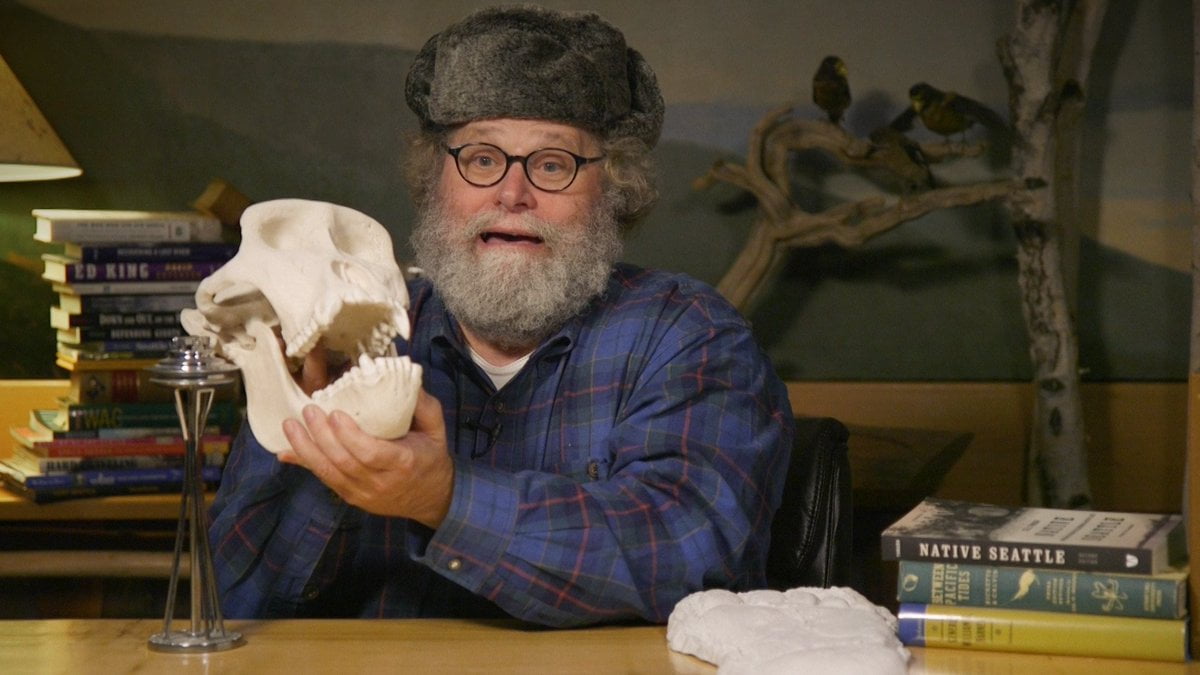
What I want to talk about when it comes to Bigfoot specifically – the modern, American derivation of similar myths of Sasquatch and Yeti – and the supposed place the character occupies in the public lexicon, is that Bigfoot is a kind of cultural pareidolia, an attempt to fill what looks like a somewhat obvious blank spot in the list of Things That Exist.
Bigfoot seems to me to be a compelling myth not because of what it is but because it’s easy to conceive of where the thing should exist. It’s a fascinating creature because in our hierarchy of humans and animals, it’s one of the most obvious options for a really-humany-animaly thing. We know animals exist, and we know there are, well, gorillas that are ‘not humans, definitely animals’ and there are animals that are more animal than that, and
What’s more, Bigfoot is a kind of myth struck from its original source. The idea of the Bigfoot isn’t actually the same myth as the Sasquatch from which it supposedly derives; it’s a story of a thing in English, and the mystery of it is almost always framed through European lenses like modern science and discovery of the ancient, undiscovered land. It’s a lot like the way that Africa and the idea of mysterious tribes of magical gorillas got treated back in the 1890s, by the Burroughs/Lovecraft/Howard crowd of authors.
Basically, I guess, Bigfoot is a colonised myth.
Wittgenstein’s Outsized Example
Today – so months ago – I spent some time reading Wittgenstein. If you’re not familiar with Wittgenstein, he’s one of those philosophers you’ll find if you do a sort of ‘greatest hits’ compilation of the 20th century. Definitely important and all that, contributing to the logic of mathematics and language.

Anyway, the thing is, Wittgenstein has this really weird relationship to game studies in that it seems traditional for everyone to write in their earlier stages a discussion of what a game is. This discussion inevitably brings up that Wittgenstein, in his book Philosophical Investigations, used the difficulty of describing ‘games’ as an example of the ambiguity of language.
And then, for sixty years since, academic writers and game scholars have taken issue with this half-page of text, the single example he offered as a stepping stone on to other topics. In fact, in some cases, they get downright personal about it!
Now here’s the thing, the thing that means me here, in the year of our Luigi is so frustrated by this: Wittgenstein didn’t really care much about games.
It was an example! It was just a language example of a grouping of things that we can all intuitively tell are connected and reasonably share traits, but don’t necessarily have a checklist of clearly and easily defined commonalities! And while sure, you can take issue with that framing, and I mean, Bernard Suits’ definition of games is the one I use but it’s still really stunning that it comes from arguing with Wittgenstein as if Witty was being Very Firm about Games, and not about language!
Imagine being so good at examples, being so renownedly smart, that years later people were building books around addressing an example of yours to tell you you were Actually Wrong. And then other people would come along after them, to disagree with them and you to try and make a point that you were definitely wrong but the other person saying you were wrong was also wrong.
And this is on a topic you kinda don’t care about!
Story Pile: The Grittier Reboot Pile

Basic Trick: Writing Structure
I’m doing a lot of writing these days.
Every day I write, every day I take notes, and every day, some of those notes get cut apart and rearranged and they don’t get used. Anyway, one thing I’ve been doing for when I have to write is giving myself a writing template.
I use google docs, wordpress, and Word to do most of my writing. Word is useful for stuff that only needs to live on my computer and which I want to export to PDF with some control – things like rulebooks. Google docs is for anything collaborative where formatting can be handled later. And WordPress – well, back when I was writing a book on this blog, I wrote each chapter in Word and then transplanted it to this blog, with a filter to turn it into html. Since then I’ve learned to use the editor for the blog itself, which is just useful enough that it does most of what I need.
Still have to look up the code to centre Youtube videos.

Anyway, this means a lot of structured writing. Writing where I need to make sure certain things have to show up, or show up in a particular sequence. Writing on my blog tends to be less structured; it’s often more of a flow, where I just start off the top of my head, find a subject, and then it goes. I try to make sure I put something on my blog every day. Some days, I don’t have anything much to say – yesterday, I wrote four articles all at once, and I just don’t want to slip into nothing for today. Something every day, every day. Right?
And so, here’s a basic piece of tech for writing when you write to a structure, and this is good if you want to write an essay but also for writing a story. What I do when I’m writing a story is make a table of two columns. In one column I put the plot beat, the story part, and I put them all in an order I can use. Then, in the table next to it, I flesh that out. Maybe I write prose straight into it. Maybe I write that incident and break it up into new lines of events.
Here’s an example, using lorem ipsum text filled in in the side.
| Introduction | Proin a volutpat lacus. Mauris semper elit nisl, et venenatis enim malesuada ut. Nunc et tortor erat. Pellentesque euismod nulla accumsan, tincidunt magna quis, fermentum quam. |
| Meet Wizard | Fusce mollis dolor nec quam tristique, venenatis hendrerit arcu malesuada. Quisque massa lacus, consequat id nibh vel, facilisis pretium metus. |
| Deal W/Hat | Etiam nec posuere eros, pharetra imperdiet lorem. |
| Grapefruits | Suspendisse sodales lectus et ipsum varius ullamcorper. |
| Punchline | Nulla a nibh consectetur, cursus sem id, varius quam. Pellentesque vitae luctus mi, sed venenatis nunc. Lorem ipsum dolor sit amet, consectetur adipiscing elit. |
The thing with this kind of structure tool is it’s useful for me as a simple tool that gets me thinking about what I need. It’s a rudimentary basic, it’s getting into the guts of a story and making sure that I get things in the right order, and then I can refine it, make it flow together better afterwards. But a lot of the time we need to get started on things, and this is a good tool for priming that pump.
MTG: Word Counts
Hey, Wizards Employees! There’s a custom card in this post! It’s just a bunch of existing keywords on a blank field! I think this one is safe for you to look at, but just in case, now you know!
Continue Reading →Game Pile: DUSK
You know if this had been what the Quake wars were about I’d have actually have had a lot more fun.
Rebuilding Cobrin’Seil Part 2: Knightly Orders
Back in 3rd edition, I created my own D&D setting. It wasn’t very good, but I’m still very attached to it, and want to use it as an object lesson in improving. I also want to show people that everything comes from somewhere, and your old work can help become foundational to your new work.
Content Warning: Some of the old text is going to feature some unconscious cissexism and sexism, and I know there are a few unknowingly racist terms that I used.
I mentioned last time that I like giving players handles. In the country now known as Dal Raeda, this took the form of different provinces, with different cultures, but since a game set in Dal Raeda meant I’d be dealing with the lead-in to a potential civil war or players subverting or delaying that civil war (and that seems a big setting piece to deal with in my first game or two), I immediately relocated my focus to the nation next door.
Continue Reading →Unit Operations By The Rulebook
Therre’s this idea in chemistry called unit operations.
First introduced to me by the work of one Ian ‘Videogames Are Better When They Don’t Have Stories’ Bogost, who I absolutely have to respect as a peer in the field even if I want to squirt him with a water gun when he says stuff like that, in his book helpfully titled Unit Operations: An Approach to Videogame Criticism, Unit Operations are the idea of, well, the smallest possible unit of thing-ness in a thing.
That’s not a helpful definition, but hey, he wrote a whole book explaining what he meant. Wikipedia tells me the term in chemistry got its popularity around the period after he wrote the book, but without getting my hands on actual chemistry expertise and pedagogical books I don’t know who came up with the term first, or if there’s a lineage between them, so I’m just going to chart the process of how I came to terms with them. First read the term from Ian Bogost, then while looking up a citation back in April, I found it was used in Chemistry.
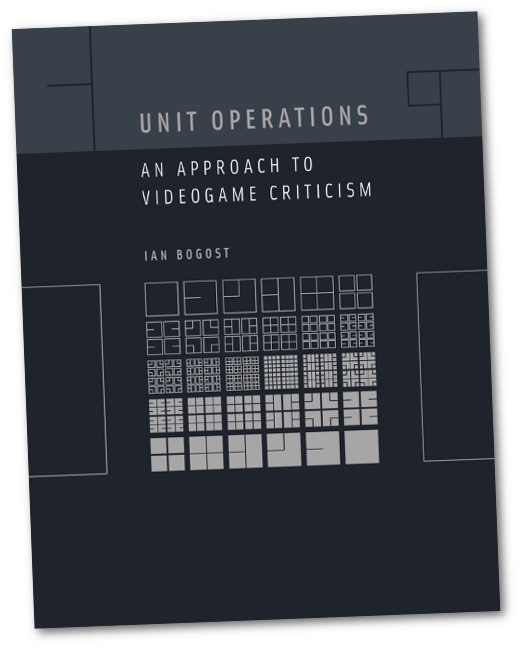
As Bogost uses them, Unit Operations work within the idea that every single component of an entity you can consider in a critical way can be broken down, as it were, to particles of meaning, intention, limitation, all that – that you can metaphorically grind a videogame (and indeed any artwork) down into discrete, interlocking components of distinct separate meaning and purpose. In chemistry, the idea is that a unit operation is a basic step in a process; processes can be all sorts of things, like let’s say you put the blue crystal in the green water, then they both turn red and then the crystal dissolves, then you’re expected to pour it out. From the user’s perspective, they added something, then poured it out; but in terms of process, there were at least four unit operations:
- The crystal was added to the green water
- The crystal and water reacted so they changed colour
- The crystal reacted so it dissolved
- The mixture was poured out
Chemist friends, please understand I am simplifying. Where I find this idea useful is rules. And this rulebook is what’s giving me problems right now.
In the game Freight Expectations, the rulebook flummoxed me for weeks. I had the document open, I had revised and rewritten the same section over and over again, and each time I found myself frustrated. Sometimes it was doubt – would that be fun? – and sometimes it was confusion – what am I even saying? – and more often than not, it was paralysis – if I want to change this mechanic, I’d have to change some cards to go with it.
Struggling with that, I decided to break it down into a list of unit operations. Unit operations can be when the players do something, or when the game does something. What this looks like is a bit like this:
- Player 1 starts the turn
- Player 1 chooses to do option A, B or C
- If they choose option A, here’s the sequence
- Sequence X of option A
- Sequence Y of option A
- Sequence Z of option A
- If they choose option B, here’s the sequence…
- If they choose option A, here’s the sequence
And so on.
It’s not a pretty ruleset, but it can be a useful technique for breaking down what you need players to do, and quite frankly I think I’d rather a well structured ruleset that you can do with a bullet list than beautifully structured narrative that is confusingly put together.
Btw, do I have progress? Not necessarily. I’m writing down my changes, and hopefully they’ll be good in the morning.
We’ll see how it goes.
Third Times A Charm
Time to time, you may have seen me say something to the effect of playtesters are always honest about what they feel, they don’t necessarily know what’s right. It’s good advice, generally speaking. Here’s a similar one.
If three people point out something weird in your interface, listen to them.
Hey, do you remember the game Hook, Line and Sinker I’m working on? Back here in April I’m waiting on printer runs for it, and it’s frustrating because it’s just big enough that it won’t go in a standard envelope so it takes seven weeks to get to me in Australia, so I’m working through remote people, anyway.
Thing is, this game has symbols for three card types, three suits. Here is what they were, this morning:

Hook, line, sinker.
Then my friend helping me with the prints looked at the sinker and said ‘huh, isn’t that a bobber?’
Now imagine me falling back into a conversation like a sudden memory moment in a movie, to one of my playtesters saying ‘huh, that’s a bobber.’
Then imagine in that moment, me falling back into another sudden memory, of Fox, looking at the art as I first devised it, and said to me, isn’t that bobber?
And then imagine me, sourly, today, doing this:

Does this look like a few hours of work? Because this was a few hours of work. Getting the sinker to look like a model of a sinker I could find on the internet. Trying my own style of the cable, trying to make sure it can fit in the same spaces as the others on all the cards, redoing the cards that need the art adjusted to accommodate the new bit – because hey, check this example card, where the white line vanishes.
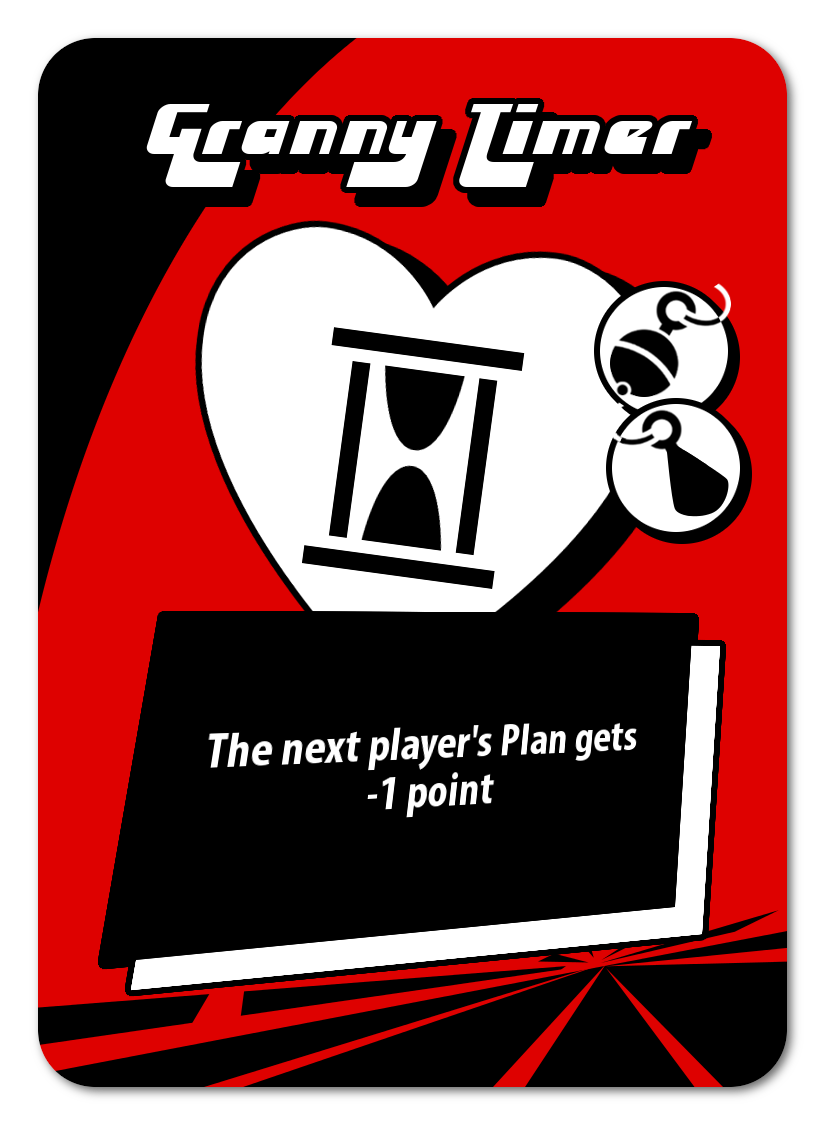
Anyway, here are those gems, once more, now with the new ‘sinkery’ sinker. It would be easy to ignore it, but I knew I was on a track to hear ‘isn’t that a bobber’ one more time, and every time, any explanation (“I don’t much care,“) was going to start to annoy me.

So yeah. Game interface is important. Even if something is annoying to do, it’s worth doing if it stops you getting more annoyed later.
Story Pile: The Mystery Box Pile
Ethically Expert
I am at this point in my life, at least accomplished enough in reading some books and mentioning those books by name in the middle of other sentences, something that you could consider, or at least be fooled into thinking, is an expert. I have done things that other people have not yet done and I’ve done a LOT of them – it’s not just that I’ve made and sold a game, it’s that I’ve made and sold dozens of games, for a few years now. It’s not that I’ve got a degree in business communications and media, it’s that I’ve got a degree, and honours, and am working on the next level of academic study.
What’s more, the kind of thing I’m studied in isn’t something that most people really know that much about, or even know that there’s much to know. Oh, videogame fans may think that the entire field of games studies or media theory is pretty meaningless, and that beating Dark Souls means they’re more capable of knowing about how humans deal with or make games than anyone who’s actually studied them, but broadly speaking if I meet a stranger and tell them I’m working on a PhD in making tabletop games, they’re largely inclined to nod, smile, be polite, and say ‘Oh, that’s interesting,’ and if they’ve got the time, ask me some questions, and then all that expertise and my own native curiosity kick in and we talk about something that matters to them and how it relates to my field of study.
It is fun and I like doing it, because I wouldn’t be in this subject matter if I didn’t love it, but it’s also something I’m aware generally relies on them trusting that I know what I’m talking about. That trust is pretty freely available, especially amongst people who don’t think they’re experts.

Now, recently, a piece was published in the Atlantic that wanted to talk about rhetoric and argument as an art that was created in Ancient Greece and then sat completely still, unchanged and waiting for someone in the enlightened 21st century to point it out, and can you all please stop making fun of me on the internet. As a direct result of this, people who did know about rhetoric and academic study of argumentation spent the afternoon quietly exploding about watching their discipline finally get some mainstream journalistic attention, only for it to be touted by the kind of babby talk doofusry that showed the author of the piece was only seen as capable of commenting on it as what we might call a wikipedia-level surface-reading scholar.
I’m not going to link the piece, because the dude in question is a transphobe and I think heavily invested in the idea that other people on the internet should definitely show him more respect just for his awful, horrible, miesrable opinions that get kids killed, but he does put me in mind of something that worries at my mind a lot, something applicable for my life.
By the way, one of the applicable things is ‘Don’t be a transphobic asshole.’
The other thing is that to most people, I am an expert, as far as they know, and I have things in my life and history and my demeanour and my tone and – let’s not kid ourselves, my whiteness – that make me seemingly more qualified than any random. And with that trust can come a lot of dangerous implication. I mean, it’s not impossible that I could find someone with money, who was a total asshole, but who wanted to be told their total assholery was correct, and then spend my time telling them what they wanted to hear, rhetorically turning and tuning whatever nonsense they wanted into things that sounded legitimate. I don’t want my positions on things to be taken up as forms of harrassment or attack.
This is a concern that really eats at me.
And so I continue; the need to cautiously temper myself, the need to make what I say reasonably easy to understand, and to root my explanations in either my own sincere feelings, or in scholarship and other sources that I can point to. That’s one of the reasons why I mention the names of these scholars: It’s not to show off ‘look how many books I read.’ It’s to make clear the fact that whatever it is I know, it is rooted in a long and wide tradition of other people, that I am standing on the summits of hills made of giants, and all I really am trying to do is describe, to you, the view.
The DM is Removed
This is sort of but not actually a response to something said in Chris Franklin’s latest Errant Signal video. Chris makes good videos, I like his work and I think I’ve even commented on them in the past. Here’s the video I’m talking about:
This video is a good video, and when I talk about the ideas in it, I want you to understand that I’m not saying that Chris did something wrong or incorrect or that his analysis could have been better if he’d done it my way.What’s more, Chris’ video is about video games and has to mostly focus on roleplaying in videogames, but also mostly as focused on by the commercial industry. You know, the kind of games you can get your hands on at a game stop or on Steam, and some on itch.
I’m in the tabletop space, so for me it’s a little bit different, and I don’t see there as being a hard division between videogames and my spaces that many people (including my own wings of academia) do. This aids me well when I get to talk about things that are definitely done with computers but need a more traditional tabletop or roleplaying setup, with games like Starship Artemis and Spaceteam, or the app-driven modes of games like Mansions of Madness or One Night Ultimate Werewolf.
What Chris suggests in his video is that, as he says, these games don’t have a storyteller or dungeonmaster. The game, he argues, has to present you possible options. But the thing is, someone made those options. Those options were still created for you by a storyteller, it’s just that storyteller isn’t in a position to readily get feedback from you. You’re being confined by a storyteller’s imagination, and that storyteller’s imagination is in turn not receiving any feedback from yours.
But in a tabletop roleplaying games, the storyteller is in many ways confined by their own preparation; it’s actually something of a hllmark of good systems how well they handle a storyteller’s need for some new mechanical content. Dungeons and Dragons may not be a reliable system on every front, but one thing that those monster manuals and dungeon books let the game do is provide you with game content that you don’t have to imagine up on the spot.
Rather than a vision of the videogame RPG as a thing that lacks a storyteller and the tabletop one as one that has one, I prefer to instead suggest that in this case, the question is not the presence or absence of a social connection, but rather the distance in it. After all, the fully remote DM of Fallout has had a lot of time to make sure all the mechanical stuff is absolutely robust (which of course, it doesn’t have to be).
Another idea in Chris’ take is the idea of consequence. There’s an example in the video of Geralt saying thing A vs thing B and then suggests there’s no change in the game between these two choices. Except there is: Geralt says thing A in one, and thing B in the other. The rest of the game doesn’t necessarily react to that, but that doesn’t miraculously make those things the same thing. This presents something of an unconscious videogaming question as it relates to play: just how much impact does a choice have to have to make it meaningful, and following from that, is a meaningful choice the same thing as memorable choice?
Videogames are absolutely smothered in choice, and lots of the times it doesn’t make that much of a difference to the narrative people walk away with. For most people who beat Super Mario it’s not important that you beat it in twenty minutes or beat it in thirty minutes; the backsteps, double checks, general reconsideration, bathroom breaks and double checks are all things that get smothered away in the general narrative of ‘I beat the level.’
You can see there’s a subtle trend towards this in Chris’ piece; he views that it’s not enough for a choice to be a choice, but a choice must be validated. He even refers to these not-good-enough-choices as warping the game; the idea that being the kind of person who cares about tradition or moralityis not important enough to express if you’re not doing it with some consequence. What I find most interesting about this is consequence works against actually playing a character. In Bioshock there’s the infamous moral question of do-or-don’t eat a baby, and eating a baby gives you reward now and not-eating a baby gives you about as much reward later. This was regarded as a bad choice, because people wouldn’t eat babies just for the rewards unless they were better than the rewards for not eating babies and good god, videogames are morally confused place.
Finally, I think of playing with a game, any game, as a creative act. The game has all its pieces and its interface, but how you choose to interact with it, wht you do with it, is creating your play experience in that space. I’ve talked about this before, and it involves using the word paratext, which I understand gets me weird looks. With that, it means that your individual experience of a game isn’t just a thing that happens to you, it’s a thing you create, and you are part of that creative act. This is important to my vision of games, too, because even if the game limits your ability to be choosey (like, say, a corridor shooter with a lot of cut scenes), the choice of when and how to engage with it, and you as a person become part of the individual experience of that game. Making play experiences paratextual is, in my mind, a valuable tool for enmeshing the player in the game, and centres what players choose to do without making the game’s ‘text’ somehow beholden to every individual player.
It’s a good video! I recommend it! I just don’t agree with it 100%!
Game Pile: Steamworld Heist
I talk about games a lot. Sometimes, I use games to talk about books. Sometimes, I use books to talk about games. Sometimes I use games to talk about culture and about art and about poetry and about history. Games, in essence, get to be a lens through which I can talk about all sorts of other things, even as I talk about the games.
Make no mistake, though. Just because I find games interesting as lenses for other ideas doesn’t mean I don’t sometimes play games because they rock socks. And you know what rocks socks? Steamworld Heist rocks socks.
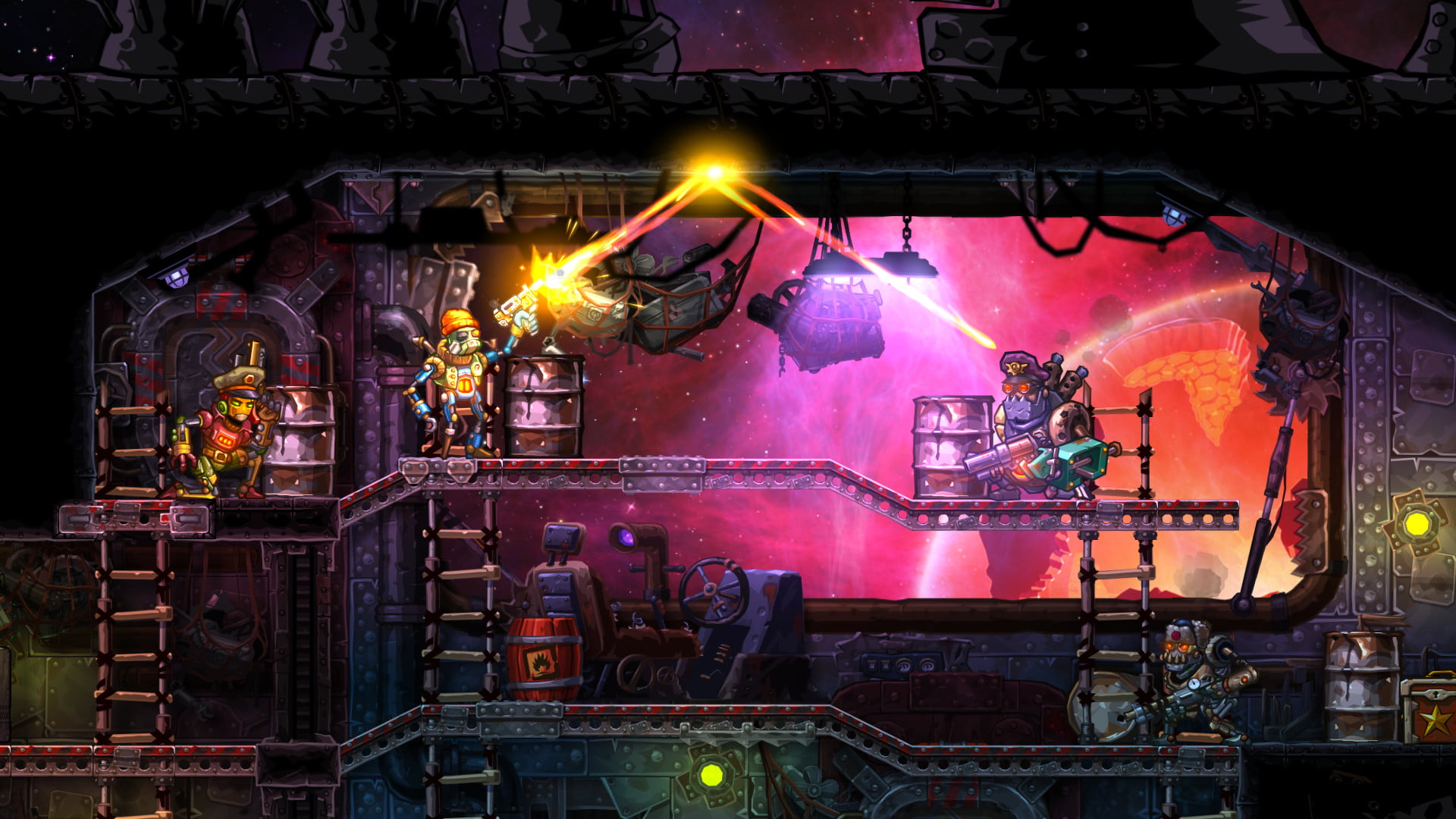
Steamworld Heist is a squad-based turn-based tactical shooter game. You know your high-profile X-Com style games? Well, take that basic idea, and make it in a 2d platformer game. You’re commanding a rag-tag group of thieves – though ‘thieves’ is kind of the wrong term. You’re more like bandits and rebels, opposing an oppressive state but also your heists are less about stealth and avoidance and much more about boarding an enemy vessel and shooting them in the hat.
I think Steamworld Heist is a really good game, and it’s definitely a videogame videogame – this isn’t something that could be implemented better in some other way. It’s available on Steam (haha), the Switch, iOS, and PS4, and it’s priced very reasonably for the amount of game you get for it.
Disengage, Distract, Deprogram
Last year, I was asked:
How do I deal with jealousy regarding other people’s happiness? It always feels like everyone around me is happier, more alive, and generally *living* better than I do. I know being the bitter Old Man staring between the blinds at the happy kids on the street isn’t good for me or anyone, but I can’t shake these feelings off.
And taking some time, thinking about it, considering things thoroughly, what I said in answer was:
When Scrabble Ends
The games we mostly play in the public eye these days are games with a lot of calcified rules. Established stuff – you know, there are books about Chess and the cover all sorts of openings and closings and strategy. The game is itself a metaphor for how we tell stories, it’s all very rudimentary stuff. It’s foundational.
Ask yourself then, when exactly is a game lost.
I don’t just mean strategically – you’ll see people saying ponderous things like ‘the game was lost at this point,’ and so on, but that’s a different metaphorical space. That’s something else. What I’m thinking about is how many games are lost several moves before they end – and how we approach people seeing that end happen.
In Vintage Magic: the Gathering, it’s not uncommon to see people concede the second a hoser hits the table. In some formats that’s considered quitter behaviour, that you can always play around or get out or you might miracle into something, but the decks in Vintage are so tightly refined to a razor’s edge that if the Leyline sticks, okay, you lose, that’s how it goes.
In Chess, check is sometimes enough to earn a concession – check gives way to checkmate deterministically. In games like Gin Rummy, you can have one player win the game with a single hand of perfect coincidence, so you might think the game is happening, and then bam the game is over. That can be a bummer, but don’t think of it as a bummer but more about how many games you see end that way.
The thing that got me thinking about it, though is Scrabble.
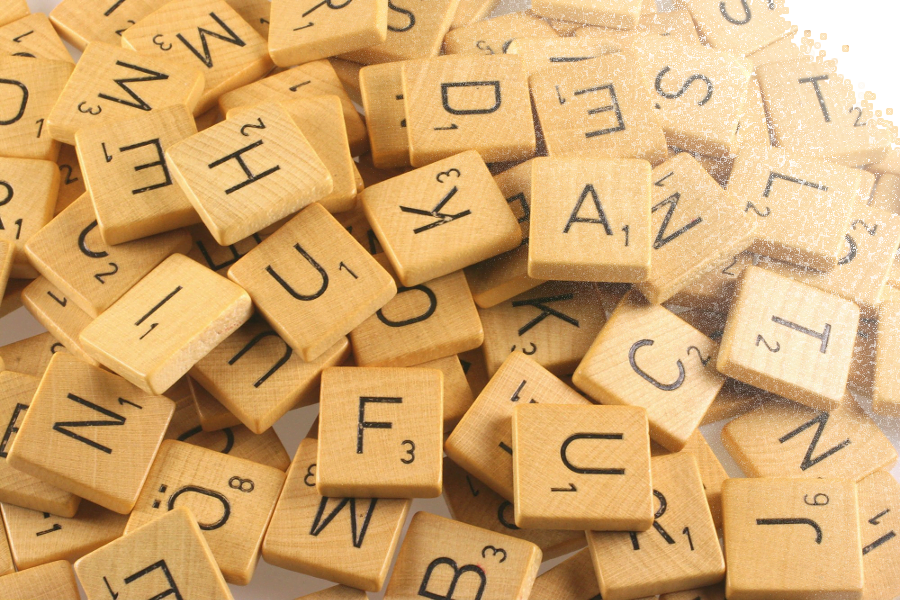
Scrabble is a pretty neat game. It’s a game with layers and levels, and it changes a lot as your skill level changes. At high skill levels, it stops being about successfully using your vocabulary and starts being about controlling areas of the board. Each move you make creates opportunities, but the turn order means that any given action means your opponent gets to use that option first. That means you actually spend your time huddling in spaces that are safe, waiting for your opponent to run out of choices that force them to strike out into the open areas of the board.
That then means that if you do strike out, you have to try and do it in a way that maximises your return and punishes your opponent as much as possible – so you want to strike out with weird words and complicated arrangements that get close but not quite reach bonus squares.
Scrabble is a game where, between players who are roughly matched, it’s very common for the game to be undecided until the last move. In Scrabble games, at the competitive level, you’ll see that it’s very rare for players to not need the last points on the last turn.
When you design your game, ask yourself at what point players stop making decisions. Scrabble, note, doesn’t even ‘end’ after the last tile is placed – you have to do some math, to see who won the game. That’s something in a number of Euro games, and also games like Sheriff of Nottingham.
Making a game interesting up until it’s done and then making that ending quick. There’s a little thing to chew on. How do you close out your game design gracefully?
Rebuilding Cobrin’Seil Part 1: Names in the Kingdom
Back in 3rd edition, I created my own D&D setting. It wasn’t very good, but I’m still very attached to it, and want to use it as an object lesson in improving. I also want to show people that everything comes from somewhere, and your old work can help become foundational to your new work.
Content Warning: Some of the old text is going to feature some unconscious cissexism and sexism, and I know there are a few unknowingly racist terms that I used.
First of all, let’s talk about just some basic work of names.
One thing I feel gives players a good handle on things is giving them groups and places to feel they can ‘belong’ to. These are player anchors, and players love those. It’s why class-race characterisation has lasted so long and so well, and why people use it when describing games that don’t have classes or races. Handles are great, and they’re part of how we tell stories and anyone who tells you they work against good storytelling is unimaginative, fight me.
Continue Reading →Story Pile: The Who Me? Pile
The Demands Of A Recipe
There’s this dude. Marco Pierre White.
This dude.

A thing I hate is that now, I feel, by mentioning this guy, someone’s going to think that what I want to do now is get into a conversation about how he’s an asshole or his son is an asshole or how he’s part of meathead chef culture or how he’s a sellout for stock pots or all sorts of things and I hate that. I hate that I don’t just need to know about Marco Pierre White as a little video on youtube that shows some cooking techniques about I need to do a moral colonoscopy on him before I’m capable of just bringing up a quote from him. I don’t want to become the kind of person who researches celebrity chefs like they’re football teams and reads cookbooks to see who has the most legitimate carbonara recipes. I just don’t.
This guy, Marco Pierre White, is one of the youngest people to ever get three Michelin stars, which is to say people who like cooking I don’t care about think very highly of his ability to cook. By any metric, he’s a pretty clever cook, certainly as far as I, owner of zero Michelin stars, think I know.
Anyway, he’s done a bunch of cooking shows, some ads for ingredient companies, and he’s spoken in things that seem like reasonably open interviews about why he supports and encourages the use of pre-made ingredients like instant stock or seasoning mixes. It makes a lot of sense to me – his stance is that he, a professional chef, can make his own stock and do a better job of it, but if you have a 9-5 job and have an hour to cook, you probably don’t have the time to make good stock or develop perfect knife skills, and with that, the store-bought ingredients represent your personal chef assistants. I like this take, it resonates with me.
What he’s said that stirred this though, is when describing ways to make things he’s often prone to saying there’s no recipe.
I think about this phrase a lot because I think that recipes, while useful, are also scary. Because a recipe has hidden information in it. Sometimes they’ll use terms like mix and you might be left wondering wait, mix how? With what? What does mixing look like here? Do I do the wet-into-dry thing? Is this assuming I’ll use a spoon? What if I wanted to use a whisk? What if I don’t have a plastic tool when it’s a non-stick container? There is a wealth of information presented in a recipe that is definitely useful, but it’s possible that a recipe just doesn’t quite cover what it has to do, because you don’t know what to ask.
When Marco says ‘there’s no recipe’ I find that very freeing, because it means there’s nothing I can fail. There’s not a list of steps and if my outcome comes out of it poorly, I’m the one to blame, because the recipe can’t be wrong. It’s a recipe.
I think about this in creative endeavours. I offer people templates and tools but I hate to think that I offer stuff for you to make things like books and games, and those things frustrate you and upset you because they don’t quite work.
It’s reassuring to have a recipe – but if they don’t make you feel good, don’t feel you should have to try and make things into recipes.
Piles of Piles
I’m going to do a thing this month, where the Story Piles are going to also be themselves, small piles. Each Story Pile this month is going to be, rather than a deep dive on one thing, a handful of quick comments or impressions on some media I have opinions on but somehow didn’t find find so interesting I had a whole longer article about it.
This feels a bit like an expression of defeat for me, where I have long since held the opinion that anything is interesting, that anyone can write about anything in a way that makes it interesting, it’s just a matter of finding the ways to connect it to the audience. Making them into a sort of general potpourri is giving up on opportunities to maybe, one day, later, coming back to these story pile pieces with a good angle on a fresh take.

Yet I’ve had some of these ideas sitting in the wings for a while, and I’ve honestly forgotten about a bunch of them. To clear my plate like this is an act of catharsis, a form of release. If I can spend a whole month talking about Voltron, because I wanted that space for the many things in it, I can spend a whole month skipping clean over things that were Good But Not Great, or Meh But Not Grandly So, or maybe Good But You Don’t Need Me Saying It.
Thanks to services like Netflix and Stan, I can just compile lists of things I’ve watched, and then come back to see that list later. This is a fun exercise in recontextualisation, because it will sometimes show me things I watched very close to one another and how one led me to the other. It shows me what I started but didn’t finish. And most interestingly, it shows me the things I forgot I saw until I looked at the list.
Game Pile: Majora’s Mask
Released in the year 2000, on April 27, Majora’s Mask is a Legend of Zelda game. Preceeded by Link’s Awakening DX, it’s generally seen as a followup, or maybe-sequel or sort-of-related game to The Legend of Zelda: The Ocarina of Time. This is already a sentence that other types of games writers would navigate a lot faster but here I am, being deliberately picky to avoid saying something that’s generally accepted as true, but I don’t want to be part of reinforcing.
One reason to be careful about the wording is to just try and avoid someone nitpicking. After all, I don’t know anyone who’s likely to point out well actually, the DX release of the gameboy Zelda game came out between Ocarina and Majora’s, but somehow, going that extra mile keeps me extra safe, right?
Continue Reading →MTG: Custom Rarity
Hey, why do we put rarity on custom cards?
Seriously.

Do you build your game to think it’s draft? Do you make cards for cube? Why do you try and position your cards as some rarity or another? It’s interesting that often, rarity is presented as a reason for a card to justify power – cards that are probably too good are excused with ‘it’s meant to be a rare’ or ‘it’s meant to be pushed,’ and that’s always funny to me when you consider how few people are actually making things based on rarity.
Not nobody mind you.
Now, my answer to this personally is that rarity is another form of proper design of magic cards. They have constraints, and they’re reflective. If you make a card that should be a common, you should have the design sense to do that. And that can mean sometimes, a card that’s a weird oddball that only works in niche spaces winds up being rare.
As a pragmatic matter, rarity ‘only matters’ for draft. But we can, as amateur designers, get a good handle on rarity as it matters for draft. If a card could bust a draft environment open like Vengevine, it needs to be Mythic Rare to ensure it doesn’t ruin every pod. If a card is just the intersection of keywords and creature types, French Vanilla and nicely costed, it can live at common.
Yet, we often talk about Rarity as if it’s a list of four when that’s a sneaky lie. There are four Rarity expresions (well, there’s more, but bear with me); the symbol will show common, uncommon, rare or mythic. That’s not even all the basic categories of rarity, though.
There are seven basic rarities you can give cards:
- Common. Commons are often good cards that do one thing, in a few words. Common cards can still be exciting and fun to design, because being common doesn’t mean you’re bad. Commons are also some of the best places to show off keyword mechanics, because there’s nowhere for a mechanic to hide on a common. One reason I beef about amateur-designed keyword mechanics is that many times, the common of them gains nothing from just having the keyword.
- Uncommon. Uncommons are the siren of the casual designer because that’s where we tend to feel it’s okay to push something we like a lot, as long as we can justify it as being a bit bad in some way. I think Eternal Witness is my all purpose comparison card – casual developers would often print Very Strong Effect on a 2/1 and suggest it was okay because it wasn’t giving you a very good creature.
- Rare. Rares can have a lot of words on them – something like 50 words, for a comparison. Rares can have multiple mechanics that interact on them. Rares are also a place where you can show off what a keyword mechanic can do, pushed.
- Mythic Rare. Rares, but which are even more distorting to limited environments.
- Special Inclusive rarity, like Timeshifted cards, where the rules of this expansion give a reason for a Bonus Rarity. These are a fun thing to think about – it’s also the place that Innistrad’s Double-Faced cards kinda lurked.
- Special Exclusive rarity, like the starter deck cards or Commander cards; ie, it’s never meant to show up in a booster draft, but players can jam it in cubes or constructed formats. These are also odd because their rarity is literally only meant to represent specialness and complexity.
- Basic, cards that are extremely common and yet also extremely available.
This is what I sometimes call invisible ink. Players sometimes don’t even realise there are more rarities – I’ve seen players say there are only ‘really’ three rarities, and Mythic rares are a subtype of rare.
Anyway, just a thing to think about.
Rebuilding Cobrin’Seil
When I was nineteen, I started running Dungeons and Dragons. The history of my time with this game isn’t important, but what is important is that when I started, I had access to the setting books of the Forgotten Realms and Greyhawk settings, and seeing this veritable library of game rules and information about mechanical identity and culture, I immediately said No, I don’t want that.
I wanted to tell stories with this game, but there were two reasons I wanted to avoid an established setting:
- I was brand new to the game, and didn’t want people to feel they could ‘beat me’ about the world by bringing up a book
- I didn’t want to have to read a dozen books to get started
Instead, I invented a world in a weekend and then spent years bolting on new things, editing, re-editing, retconning and then, around the time 4th Edition became a thing, I quietly put the world away and worked on other stuff. I still ran the occasional D&D game in this world, but the world wasn’t important to the games.
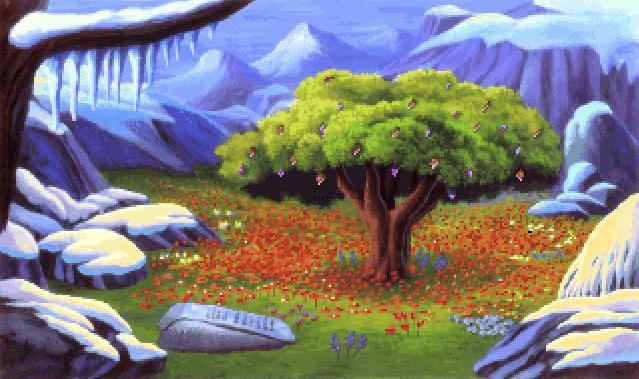
This is a huge trove of lore and game mechanical information. I made classes and races and feats and just a ton of stuff, some of which I recently dusted off and looked at, and you know, some of it was bad, but some of it surprised me. Particularly, a thing that surprised me was how many of the basic ideas in it I liked, and wanted another chance to do better.
Plus, I know there’s an interest in worldbuilding as a skill, and I’m friends with some people who are really good at it, and they’ve had some really interesting stuff to say about it. But I don’t just want to make good things and show you the final product; instead, I want you to see that every good thing you like was worked on and refined and changed, and for that reason I figured I’d put down these setting revision notes here, in a series.
This is going to introduce you to the setting, both how I’d explain it to a player, and how I’d put it into a book. I’m going to examine my ideas, and then examine how I think players might engage with them as play spaces.
Going back over old writing is going to reveal some ugly stuff, and some really basic stuff. I imagine there’s going to be some implicit racism and cissexism, some unconscious misogyny and I know at least once I use a slur as a game term, which isn’t good. A content warning then, going forward.
The image is from the VGA Remake of Quest For Glory I, a game that heavily influenced the creation of this setting, even if I let almost none of the Cole’s taste for Whacky Humour infiltrate my game.
